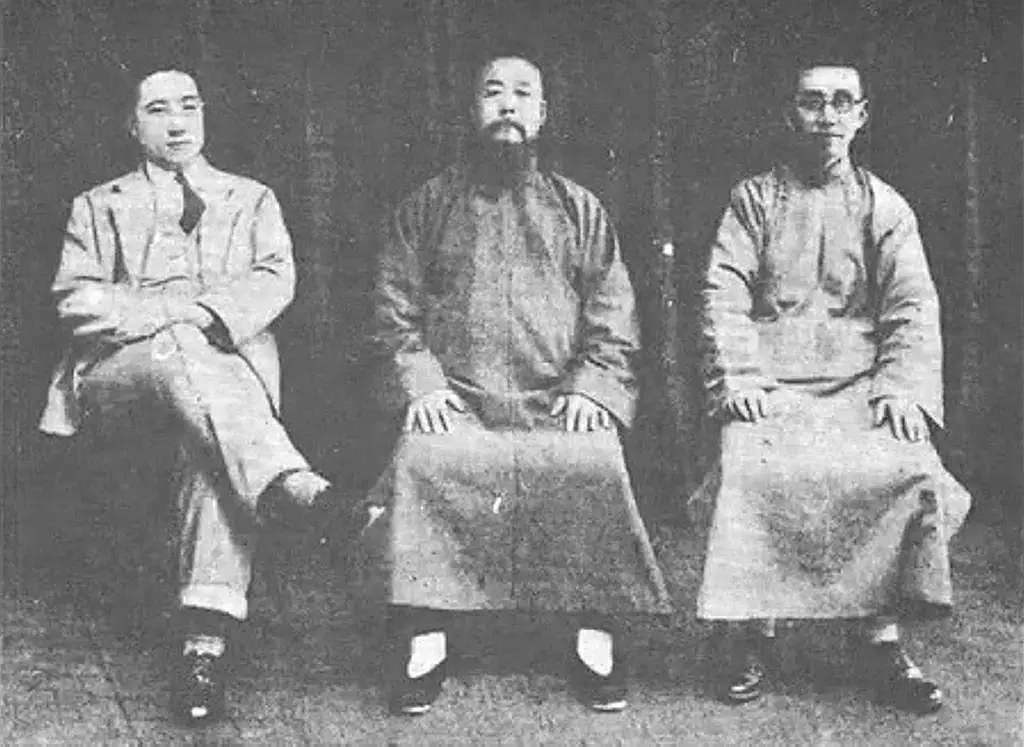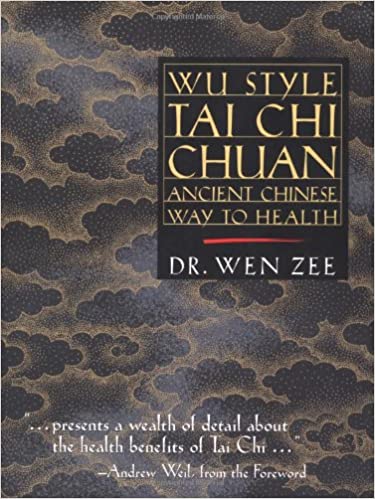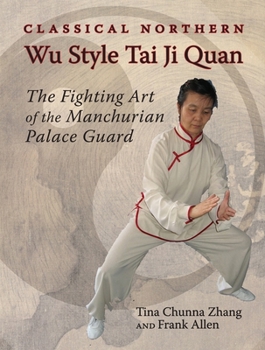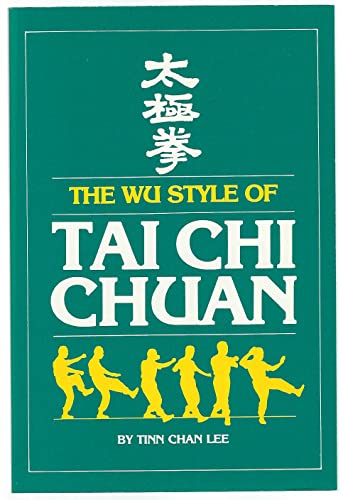Imagine being present in the Forbidden City in the mid 1800s when Yang Tai Chi founder Yang Luchan was a lead instructor for the Qing Dynasty Military. The best soldiers in the country being trained at the highest level. Out of this group, a military officer of the Imperial Arms Brigade became one of Yang’s first disciples and began developing the complex system of Wu Style Tai Chi that we have today.
Wu Style Tai Chi Chuan is an internal martial art and the second most commonly practiced tai chi style. Founded by Wu Quanyou, a disciple of Yang Luchan, it was later popularized and further developed by his son. Wu Style Tai Chi is recognizable by its square stances and emphasis on sparring, push hands, grappling and throwing techniques.
Wu style is such a beautiful combination of what was past on from Yang style and the military background of the cadets that developed the form, the martial techniques, the grappling drills, and the weapons training. By starting with the history we get a sense of why the tai chi Wu style movements are so unique and how the system evolved.

Understanding Wu Style Tai Chi
Before jumping into the Wu’s history and video examples, let’s start with a general overview of what Wu style tai chi is. For me, I was pretty confused at first because I didn’t understand how Wu style was different that Yang style because I knew they had the same teachers. I also thought Wu Family (吳家) style and Wu Hao (武郝) style were the same thing. The truth is that they are just spelled the same in English and sound the same, but are distinct Chinese characters and different families of tai chi. We dedicated a different essay to Wu Hao Style.
Wu style tai chi is the second most popular form of tai chi behind Yang style and the fourth oldest behind Chen, Yang, and Wu Hao. It is considered a complete system focusing both on the martial and health aspects of tai chi. There are predominantly three forms that are practiced. The traditional long form with 108 movements remains that same as it was originally taught although different schools have different minor variations. There is fast form which is basically a quicker version of the 108 movements and a shorter form was developed more recently to increase the spread the style and to use it in competitions.
There were many weapons originally taught by the Wu family but now most schools only teach one of the sword forms. Where Wu style tai chi gets exciting is the tremendous amount of knowledge that is baked into push hands routines, grappling, and martial applications. The stances and purpose of the movements do two things simultaneously: they teach proper posture, breathing, and openness of joints to promote health while teaching balance, stability, and techniques that aid in fighting.
Wu Style Tai Chi History
It’s easy to get confused when talking about the history of a martial art, especially when almost everyone involved is named “Wu.” What I am hoping to convey here is that a lot of thought across several generations was put into one series of movements to contain as much information as possible to promote health and well-being. Sons, daughters, spouses, and cousins all contributed to improving the art form. The Wu style tai chi history is rich and family members continue to teach today. Secondly and unique to Wu, women were taught and allowed to teach. This influenced the balance, grace, and development of martial techniques that were successful without the sole use of external strength.
Around1850, Wu Quanyou was a military cadet officer in the Yellow Banner Camp stationed in the Forbidden City. He became a student and then disciple of the founder of Yang tai chi and was notable for developing his skills to an extremely high level. His son, Wu Chien-ch’uan, began training from a young age and became one of his father’s primary disciples. He refined his father’s form, making it distinctly different from the Yang form, and is therefore given credit for co-founding this style.
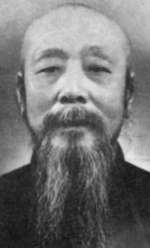
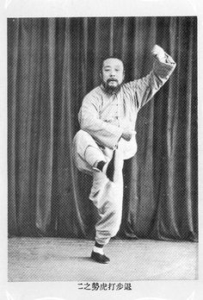
What’s often missed is that son Wu Chien-ch’uan also became a military cavalry officer and taught tai chi so he was talented and experienced within his own right. He worked along side the Yang masters and Sun Lu-t’ang who would go on to found Sun style. It’s impossible to imagine how much practice, development, and debate went on with so many high-level practitioners living in the same place and at the same time.
Wu Chien-ch’uan reduced the large circle movements of Yang style and squared off the stances. The Wu-style stepping was also smaller to support fighting aspects like grappling and throws. Wu Chien-ch’uan moved south to Shanghai, founding another school. Two sons and a daughter became prominent teachers, taking the art first to Hong Kong, then Canada and throughout the world.
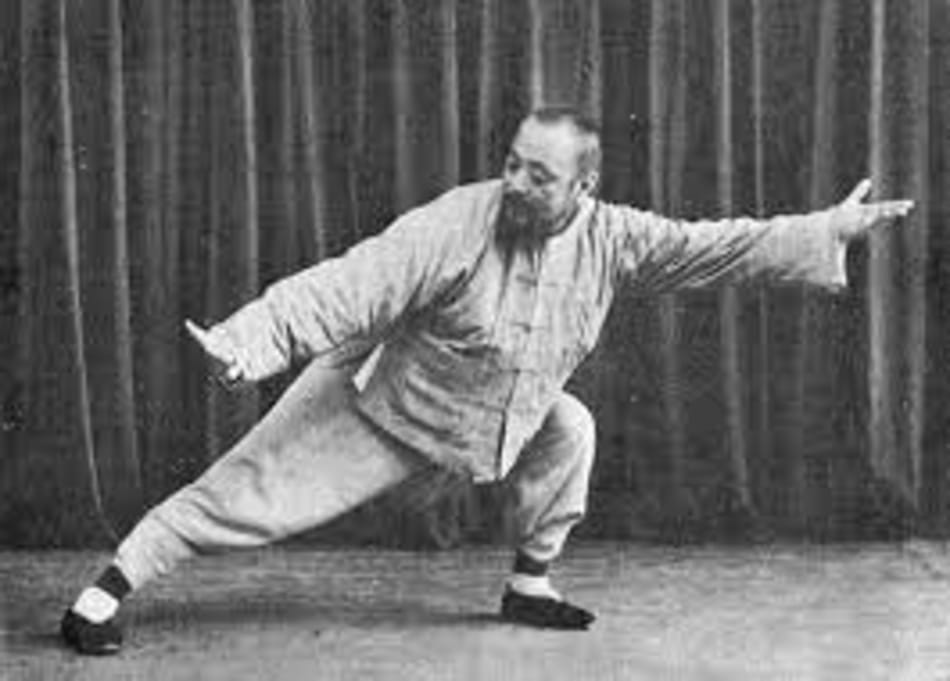
Tai Chi Wu Style Movements
Let’s say you are walking through a park and watching someone do tai chi. Which style is it? While there are subtle differences between many of the styles, the tai chi Wu style movements and poses are very distinct. The stylistic differences are intended to differentiate it from Yang tai chi, it’s predecessor. Additionally, there are health and martial reasons behind the specific instructions and stances.
How and Why is the Wu Style Form Different Than the Yang Style Form?
It was said that out of respect and deference to the Yang lineage and masters that trained the first members of the Wu Family, Wu Chien Ch’uan altered the original 108 movement form to be characteristically different than the Yang 108 form. Wu reduced the size of the circles that the arms and body make which gives rise to the idea that Wu has the “small” form or medium frame.” This is true. The circles are smaller and sometimes only result in circles of the hands. The steps are also shorter and the feet are normally pointing in the same direction.
However, the Wu style form isn’t just an alteration. The small circles of the hands directly translate into wrist and hand grappling techniques. As an example, a small wrist rotation can remove someone’s hand from your wrist as you grab theirs with the freed hand. Same goes for the stances. The stances and steps lend themselves well to throws. Anyone who has tried to throw someone by cross-stepping and turning 180 degrees knows how difficult this is and how perfect your timing has to be. A Wu version has you doing the same rotation but tripping a person over an extended 45 degree leg (image above) which is a lot easier to carry out.
Wu style tai chi movements do retain most of the same names for the Yang form but that is common for all the families. Equally so, tai chi principles such as remaining soft, relaxing, sinking the shoulders and elbows… are common to Wu practitioners, they are just achieved in different ways. Here are some examples:
Wu Tai Chi Stepping and Stances
The foot positions of Wu are very unique. The toes, even in diagonal postures, remain in a line and are always pointing in the same direction. They are boxy and really help during wrestling and throwing (shuai chiao) because when you have lifted or are supporting all of your opponent’s weight, it is evenly distributed between your legs and your knees are in straight positions. Know that small foot angles are allowed between transitions and based on flexibility.
Wu Tai Chi Postures
The Wu tai chi postures are what makes this style easiest to pick out. There is a decidedly forward angle in most postures when the body extends from the heal through the top of the head, sometimes at a 45 degree angle. It should be noted that this is not slouching but an extension through every vertebrae like in every style of tai chi. Wu also trains a backward shift of the body when shifting weight where most styles stay upright.
Wu Style Tai Chi Push Hands
All of the fundamental principles of Wu style can be seen and practiced in their push hands drills. Beginner patterns introduce a practitioner to the four directions. They progress into circular movements, on to moving/stepping patterns, and into free form or sparring.
For those of you familiar with Chen style or Yang style push hands, you will notice that the characteristically linear progressions of Wu style carry over into their push hands. The steps are also shorter and closer together than the other forms. Contact at the higher levels is maintained between practitioners at all times. This enables classmates to do push hands and practice martial techniques more safely because no one is striking from a distance. It also trains the stickiness of push hands where techniques can be performed at higher levels without having to actually grab the opponent.
Here is a video of Wu Chien Ch’uan’s great grandson. The first half is a set of warm-up exercises which are really important to avoid injury. Starting at about 33 minutes, he works through the Wu style tai chi push hands patterns.
Wu Style Tai Chi Push Hands Energies and Focuses
Another place where Wu style tai chi took a tai chi principle and developed it further is they way they incorporated a focus on teaching the eight energies and five movements into push hands. Collectively known as the “Eight Doors and Five Steps,” they are a way to train proper internal power into you push hands and really improve the movements of your open hand form.
Eight Doors and Five Steps = 13 Power Movements of Push Hands
- PENG – Ward Off
- LU – Roll Back
- JI – Pressing
- AN – Push Down
- TSAI – Pulling/Plucking
- LIE – Twisting/Splitting
- ZHOU – Elbow
- COW – Shoulder
- JIN – Advance
- TUI – Retreat
- KU – Look to the Left / Step Left
- PAN – Look to the Right / Step Right
- ZHONG DING – Central Equilibrium
Wu Style Tai Chi Forms
What better way to talk about the Wu style tai chi forms than to show some great videos! Hopefully at this point you will know what to be on the look out for in terms of style specific moves, postures, and focuses. There are four forms that most Wu style practitioners know about or practice. There is a Wu style short form, long form, fast form, and sword form.
Tai Chi Wu Style Long Form
The Wu style long form has 108 movements like Yang tai chi. The names of the movements are primarily the same and even the order of many of the movements are shared between the two families.
Here are a couple examples of the Wu style tai chi 108 forms so that you can see practitioners of different ages. You can also see a list of the moves in this Wu Style Tai Chi 108 Forms PDF.
Wu Style Tai Chi Fast Form
The Wu style tai chi fast form is nearly identical to the long form. It has the same movements and sequences but is performed faster and with variations in speed at specific places.
Wu Style Tai Chi Short Form
In 1988, the Wu style tai chi short from was established to increase the spread of the art and to create a standardized version that could be used as the official competition form. This version has 45 movements but retains the essence of the movements from the long form.
Wu Style Tai Chi Sword Form
There is a Wu style tai chi sword form that is practiced quite widely.. Different schools have different variations but for the most part it remains the same. With it’s initial military influence, Wu style had many sword forms such as The Seven Stars Sword, Heaven and Earth Sword, Double Handed Form and Two Person Sword Form. While some of these can be found on video, most are no longer taught with any great regularity.
Wu Yinghua was considered one of the best tai chi sword practitioners. She taught in Beijing and trained some of the first female martial artists. Here is a rare video of her sword form later in life. I hope to get this good by the time I am her age!
Wu Style Tai Chi Chuan Book Resources
Thankfully, there are not only a good number of wu style tai chi chuan books that you can find on the internet but there are also a few great videos if you dig for them. You can learn the form or round out your knowledge. Here are some of the most important.
Wu Style Tai Chi Chuan Ancient Chinese Way To Health
Number one on our list is Wu Style Tai Chi Chuan – Ancient Chinese Way to Health (ad) because it is great information for any tai chi practitioner. It is unique in that it talks a lot about how to practice tai chi and simultaneously develop the mind, internal energy, and body. It also includes instruction on the short form and push hands.
Wu Tai Chi with Master Chenhan Yang (YMAA) 45 Form / Beginner-friendly Step By Step Instruction
Second our our list is also in book format which is Wu Tai Chi Beginner-friendly Step By Step Instruction (ad) where Chenhan Yang leads your through the 45 movement form.
Where is the Wu style tai chi chuan gold book pdf?
If you are researching or asking around for Wu style material, you are sure to come across references to the Wu style tai chi chuan gold book. It is a book of 15 chapters written by Wu Kung Cho and published in 1935. It is said to contain instructions on the Wu form to preserve it and help future practitioners. It was re-released in 1980 (ish) and there are some references to it being translated into English. Unfortunately it seems that the Wu style tai chi chuan gold book isn’t available for sale or downloadable as a pdf. If this changes and an English version becomes available, let me know and I will post a link here.
Tai Chi Secrets Of the Wu Style
Tai Chi Secrets of the Wu Style was written by Jwing-Ming Yang and recently updated. This book is treasured by people who have been practicing Wu style because how deep Yang goes into specific topics. It’s descriptions assume a level of proficiency and understanding so you may get lost a bit if you are new to tai chi.
Additional Wu Style Tai Chi Books
Wu Style Tai Chi Online Courses
Want to learn Wu Style Tai Chi? The Wu Style 24 is a simplified form of Tai Chi and very easy to learn and practice. This class is created by the great Master Zong Weijie. She was China’s national champion of Tai Chi for 6 consecutive years, 2015 World Champion in Tai Chi of World Kung Fu Championships, and the only successor of Wu-style Tai Chi of the fifth generation. Check out her course:
24 Form Tai Chi – Wu Style Tai Chi Chuan
An Overview the Main Tai Chi Styles
This is part of a series of articles that we wrote on all the most popular styles of tai chi. Keep reading in that direction or find out how to improve your tai chi form.


